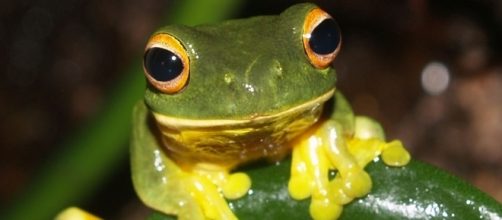A new Study that was published in the Proceedings of the National Academy of Sciences, the official scientific journal of the National Academy of Sciences, revealed how Frogs flourished around the world when the Dinosaurs went extinct. The research was done by scientists in China and the United States, who worked together to assemble the biggest set of genetic data on frogs ever analyzed.
Surviving the asteroid and surprising scientists
The study revealed that up to ten different types of frogs are thought to have survived the asteroid strike that caused a massive extinction, which wiped out the dinosaurs and about 75% of life on Earth around 66 million years ago.
Only three of these frog species would go on to spread and diversify the Earth, which today has about 6,700 known frog species. From their set of genetic data, scientists found that 88% of modern-day frogs can trace their ancestry back to one of those three frog species.
Study co-author David Blackburn summed up the study best by saying, "This finding was totally unexpected." Prior to this scientists believed that the vast majority of modern frog species appeared at a constant pace between 66 million and 150 million years ago. Now, this research has completely changed that by showing that frog diversity burst onto the scene in a surge as they rushed into habitats left vacant after the mass extinction.
Compiling the largest frog database
For the largest set of frog genetic data ever assembled the team of Chinese and American researchers took genetic samples from 156 species. This was combined with data that had been previously published on 145 frog species to create the genetic database for the study. The study also examined 95 gene variations in frogs, whereas past studies only looked at 5 to 12. This gave scientists a much greater look at how individual frog species relate to each other. Fossil records were also used to help determine when different species diverged from each other.
More on the frog explosion
Out of the three surviving frog species, Natatanura and Microhylidae came out of Africa, while Hyloidea spread throughout South America.
This gave researchers evidence of three different outbreaks of new frog species following the extinction of the dinosaurs. Frogs are now on the same path birds took, where only a few species survived the mass extinction, but they went on to become a dominant group.


